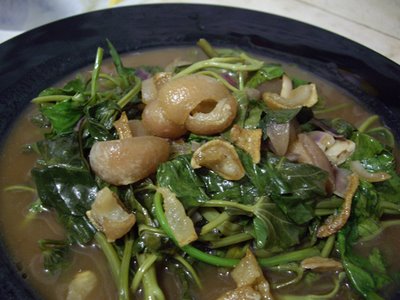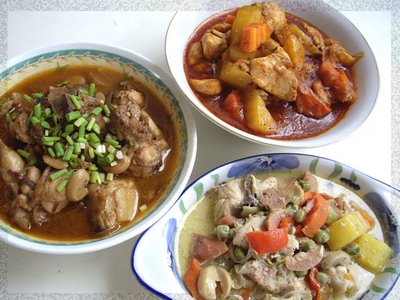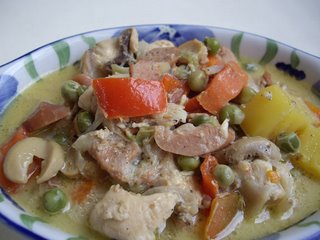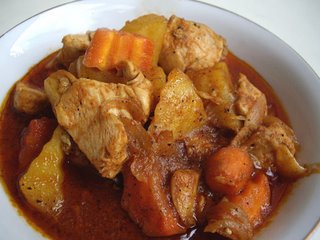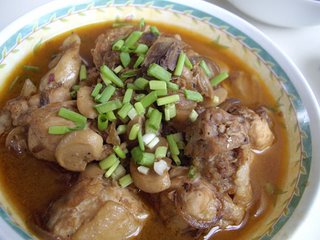Let me start clearing them out with this: a treatise on how to tell between Wansoy and Kinchay. Profound, no? Hahaha.
--------------

At first glance the bunches of greens above would look the same to you. They're so similar you'd mistake one for the other. Many people actually think they're one and the same. In fact, I've been hard-pressed to find references distinguishing the two. Many sites refer to them as originating from Coriandrum sativum, and as I am not a botanist, nay, not even a farmer, I will not try to refute that.
However, my taste buds say the two are different. And so here goes what probably is the first ever article on the difference between Kinchay and Wansoy. Aren't you honored to be reading it? Hehehe.
First off, a pop quiz: which of the two bunches above is Wansoy? Left, or right?
If you said Left, engk! Wrong answer.
A year ago someone in the SM Supermarket at Festival Mall mislabeled their Wansoy as Kinchay. As I didn't know any better back then I bought a bunch and used it in my pancit, to disastrous results. I wanted aroma and tang and I got both, but the different, weird kind. (Quite like using wasabe instead of siling labuyo to spice up your Ginataang Alimasag or Bicol Express. That weird.)
Wansoy (Coriander) is an herb commonly used in Thai cooking. If you've had Tom Yum or Thai Spring Rolls you've probably tasted its unique spicy-sweetish blend, and it's what gives Thai Curry a distinct flavor. Of the two, it is more pungent. (Some even dislike its smell, which they say resemble that of squished bedbugs. Shush.)
Kinchay (Cilantro/Chinese Parsley) on the other hand is a common feature in Chinese cooking, and is more citrusy in aroma. Break off a little piece of its stalk and you'd note that the smell resembles that of celery. If you've had Lumpiang Shanghai or Chopsuey you'd have probably tasted the spice that's uniquely Kinchay.
So, that's it. One way to tell is by smell. After the SM fiasco I stopped relying on labels and started holding the bunches to my nose to smell the roots. I no longer get funny tasting pancit, just funny looks from other shoppers. :)
Anyhow, if you prefer not to look weird when you shop, then take note of the differences in the shape, size and grooves of these leaves:
Kinchay has bigger but narrower leaves, and less grooves on its leaf blade. As you can see, Wansoy looks a little like grown versions of parsley, and a baby version of Celery. So if you're in the greens section and are unsure whether it's Kinchay or Wansoy you're looking at, try to find some parsley and/or celery and compare.
Put side by side they look something like a His and Hers watch. What do you think? :)
